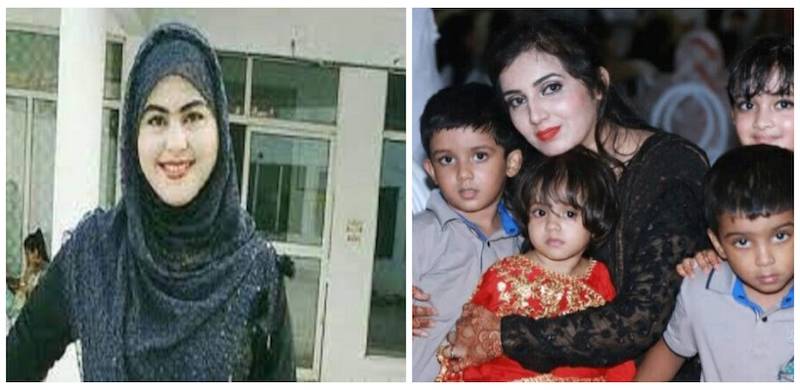
On 3rd March 2021, 33-year-old Sarah Everard was kidnapped, raped, and murdered by an off-duty Metropolitan Police officer, Wayne Couzens while she was walking home from a friend’s house in South London, England. Following nationwide uproar and protests, Couzens was sentenced to life imprisonment.
Barely 6 months later, another woman named Gabriella Petito, 22, was kidnapped by her fiancé. News of her disappearance flooded the mainstream media and social networking sites i.e. TikTok, Instagram, etc. Tips that helped the Federal Bureau of Investigation (FBI) finally recover the body of Petito were reportedly made possible due to the monumental social media hue and cry.
But this was only one side of the coin. There were families stuck in the same realities of losing their loved ones but not receiving the same coverage. Tiffany Foster, a 35-year-old mother of three, has not been heard of or seen since 1st March 2021. Sabina Nessa, a 28-year-old teacher walking home in South London, UK, was violently murdered by a man named Koci Selimaj. Lauren Cho, a 30-year-old musician in California, has been missing since late June. For all these women – and countless others like them – flyers were doled out, protest rallies organised, news conferences arranged, but the media failed to provide the much-needed national attention. This is why these cases remain unresolved.
The response of the police department and the media to similar incidents of violence against women which have risen after the Covid pandemic varies drastically. Some hashtags opened floodgates of rage by the public while for others, the media attention remained missing.
When investigated, the only difference which could be registered in these women was the color of their skin. Foster and Nessa were both women of color, unlike Everard and Petito. So, while Everard and Petito received stalwart attention globally, the cases of Nessa and Foster were hardly known even in their home states. The disparity could be proved by the very fact that in the last decade, more than 700 indigenous people went missing in the state of Wyoming without any clue for the police to follow. In the same state, Petito was kidnapped, registered, and the body found in less than 25 days. Are women with blue eyes more grievable than women of color, poor women, and trans women?
But let’s not state the obvious by slandering the racially segregated response of the Western society to their women and let’s take a look in the mirror. Mid 2021 was belligerent towards women of Pakistan in terms of cases of abuse being reported in the media.
Around the time when Noor Mukadam was brutally beheaded on July 20th, 2021 by Zahir Jafer – who was arrested on the spot – there were already some cases being registered that had shaken the fabric of the society. Qurat-ul-Ain, a mother of four who was killed by her husband in Hyderabad over some domestic feud in front of her children; Saima Ali, 23 who was injured and her mother Bushra Raza killed when her father – a known drug abuser – opened fire on the innocent victim. Shahnila Machhi’s homicide in Jamshoro; the death by burning of Umbreen, 30, in Tando Jam; Keghad Baloch, 55 who was executed after excessive abuse in Kech, Balochistan are among the very few which caught the national eye.
Hashtags of these names trended on Twitter. Repressed anger/frustration found its way in tweets, slogans, marches, and protests. And gradually, these crimes were replaced by others and the news cycle went on. Despite that, the echo of Noor’s merciless murder still rings in the mind of the nation. News outlets and social media users kept her memory alive. All recent developments are being dedicatedly reported and followed, and rightfully so. But somehow the other names are forgotten, or perhaps neglected.
Why is it that names like Everard, Petito, and Mukadam manage to carve a space for themselves in the collective consciousness of the nation while others are easily replaced and simply forgotten to make way for the new shift in the news landscape? Why do some names occupy a place of privilege in the media canon? Why is there a lack of commensurate media coverage and subsequently public rage?
Ideally, the level of outrage that pours in the aftermath of the incident, should depend only on the gruesome details of the incident itself. Instead, the determination of newsworthiness in coverage of violence against women seems to be manipulated by many factors, which are as follows.
The race of the victim also matters. 'Missing White Woman Syndrome' – highlighted in US, UK, Canada, South Africa, and New Zealand – is a term coined recently by social scientists and media commentators. It refers to the bias in media coverage of missing person cases towards white, young, photogenic, middle-class women/girls compared to the relative lack of media attention towards women of color, women belonging to lower socioeconomic strata, or even missing boys. Where in one part of the world, the color of skin warrants a privileged place as a violent crime victim in news media coverage, in our part of the world, there are other determiners.
In Pakistan, the social class of the victim – an influential surname and substantial monetary assets -- can pave unsolicited pathways for one regardless of one being accused or accuser. Mukadam’s case deserved all the attention it received, but would it have received the same importance by the media and the authorities had she not been the daughter of an ex-diplomat?
Moreover, the outrage expressed after an incident of violence against women also depends on whether the victims are seen as ‘innocent’. Most are often accused of ‘asking for it’. Women’s clothes are often blamed for sexual violence. The profoundly unequal media coverage of the incidents exacerbates the pervasive concepts of disparity within the society.
Barely 6 months later, another woman named Gabriella Petito, 22, was kidnapped by her fiancé. News of her disappearance flooded the mainstream media and social networking sites i.e. TikTok, Instagram, etc. Tips that helped the Federal Bureau of Investigation (FBI) finally recover the body of Petito were reportedly made possible due to the monumental social media hue and cry.
But this was only one side of the coin. There were families stuck in the same realities of losing their loved ones but not receiving the same coverage. Tiffany Foster, a 35-year-old mother of three, has not been heard of or seen since 1st March 2021. Sabina Nessa, a 28-year-old teacher walking home in South London, UK, was violently murdered by a man named Koci Selimaj. Lauren Cho, a 30-year-old musician in California, has been missing since late June. For all these women – and countless others like them – flyers were doled out, protest rallies organised, news conferences arranged, but the media failed to provide the much-needed national attention. This is why these cases remain unresolved.
The response of the police department and the media to similar incidents of violence against women which have risen after the Covid pandemic varies drastically. Some hashtags opened floodgates of rage by the public while for others, the media attention remained missing.
When investigated, the only difference which could be registered in these women was the color of their skin. Foster and Nessa were both women of color, unlike Everard and Petito. So, while Everard and Petito received stalwart attention globally, the cases of Nessa and Foster were hardly known even in their home states. The disparity could be proved by the very fact that in the last decade, more than 700 indigenous people went missing in the state of Wyoming without any clue for the police to follow. In the same state, Petito was kidnapped, registered, and the body found in less than 25 days. Are women with blue eyes more grievable than women of color, poor women, and trans women?
But let’s not state the obvious by slandering the racially segregated response of the Western society to their women and let’s take a look in the mirror. Mid 2021 was belligerent towards women of Pakistan in terms of cases of abuse being reported in the media.
Around the time when Noor Mukadam was brutally beheaded on July 20th, 2021 by Zahir Jafer – who was arrested on the spot – there were already some cases being registered that had shaken the fabric of the society. Qurat-ul-Ain, a mother of four who was killed by her husband in Hyderabad over some domestic feud in front of her children; Saima Ali, 23 who was injured and her mother Bushra Raza killed when her father – a known drug abuser – opened fire on the innocent victim. Shahnila Machhi’s homicide in Jamshoro; the death by burning of Umbreen, 30, in Tando Jam; Keghad Baloch, 55 who was executed after excessive abuse in Kech, Balochistan are among the very few which caught the national eye.
Hashtags of these names trended on Twitter. Repressed anger/frustration found its way in tweets, slogans, marches, and protests. And gradually, these crimes were replaced by others and the news cycle went on. Despite that, the echo of Noor’s merciless murder still rings in the mind of the nation. News outlets and social media users kept her memory alive. All recent developments are being dedicatedly reported and followed, and rightfully so. But somehow the other names are forgotten, or perhaps neglected.
The race of the victim also matters. 'Missing White Woman Syndrome' – highlighted in US, UK, Canada, South Africa, and New Zealand – is a term coined recently by social scientists and media commentators. It refers to the bias in media coverage of missing person cases towards white, young, photogenic, middle-class women/girls compared to the relative lack of media attention towards women of color, women belonging to lower socioeconomic strata, or even missing boys.
Why is it that names like Everard, Petito, and Mukadam manage to carve a space for themselves in the collective consciousness of the nation while others are easily replaced and simply forgotten to make way for the new shift in the news landscape? Why do some names occupy a place of privilege in the media canon? Why is there a lack of commensurate media coverage and subsequently public rage?
Ideally, the level of outrage that pours in the aftermath of the incident, should depend only on the gruesome details of the incident itself. Instead, the determination of newsworthiness in coverage of violence against women seems to be manipulated by many factors, which are as follows.
The race of the victim also matters. 'Missing White Woman Syndrome' – highlighted in US, UK, Canada, South Africa, and New Zealand – is a term coined recently by social scientists and media commentators. It refers to the bias in media coverage of missing person cases towards white, young, photogenic, middle-class women/girls compared to the relative lack of media attention towards women of color, women belonging to lower socioeconomic strata, or even missing boys. Where in one part of the world, the color of skin warrants a privileged place as a violent crime victim in news media coverage, in our part of the world, there are other determiners.
In Pakistan, the social class of the victim – an influential surname and substantial monetary assets -- can pave unsolicited pathways for one regardless of one being accused or accuser. Mukadam’s case deserved all the attention it received, but would it have received the same importance by the media and the authorities had she not been the daughter of an ex-diplomat?
Moreover, the outrage expressed after an incident of violence against women also depends on whether the victims are seen as ‘innocent’. Most are often accused of ‘asking for it’. Women’s clothes are often blamed for sexual violence. The profoundly unequal media coverage of the incidents exacerbates the pervasive concepts of disparity within the society.

